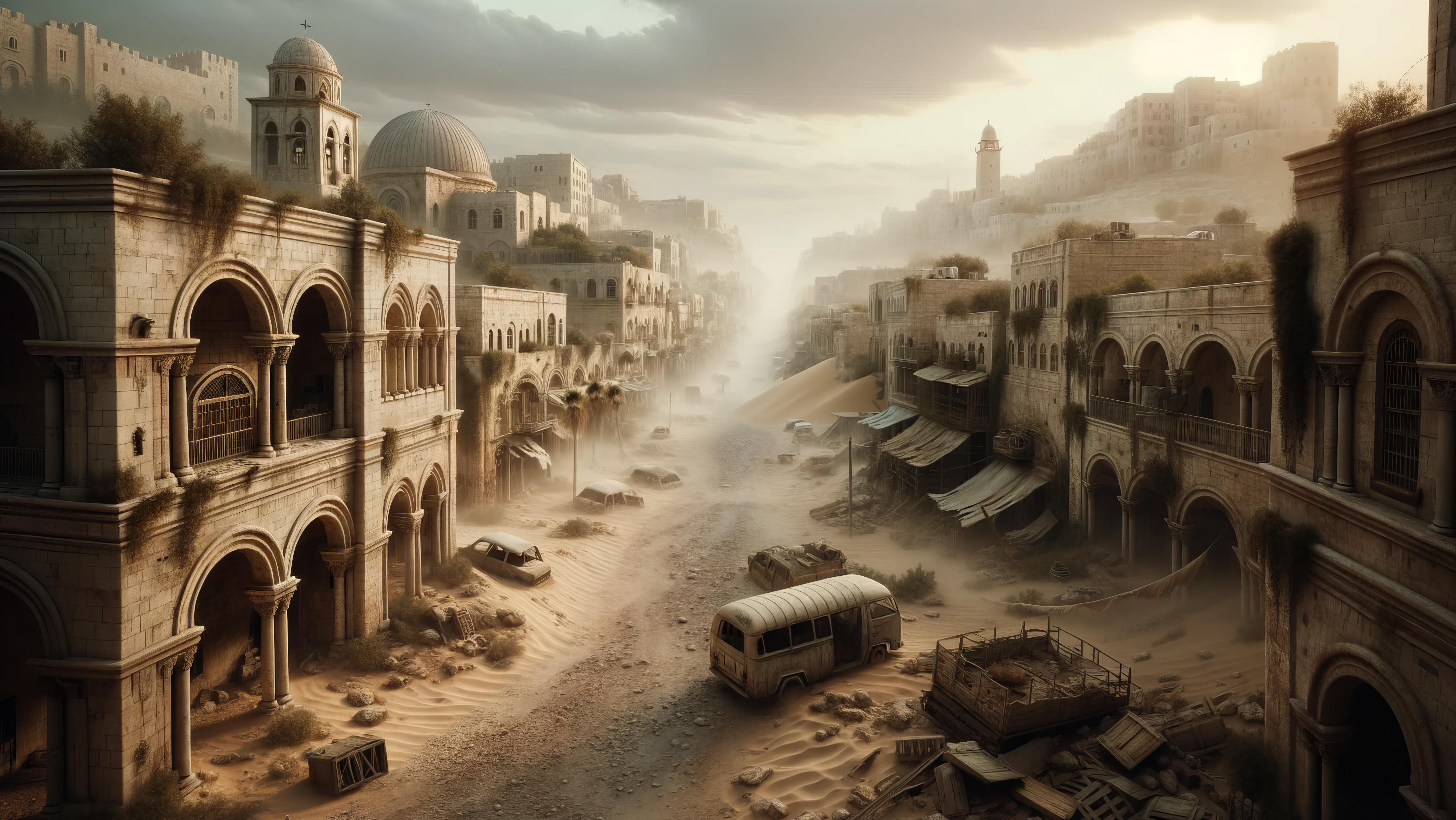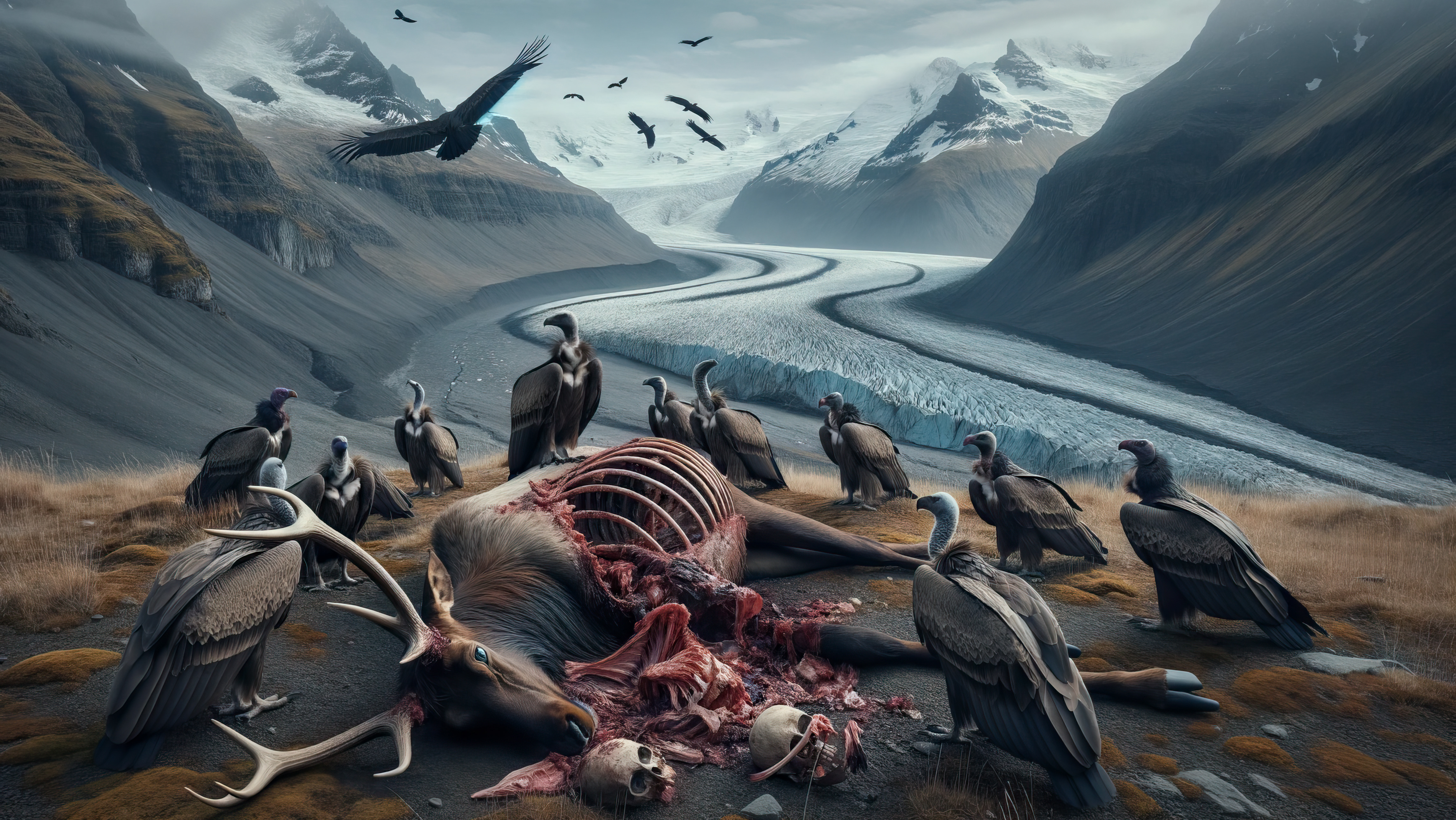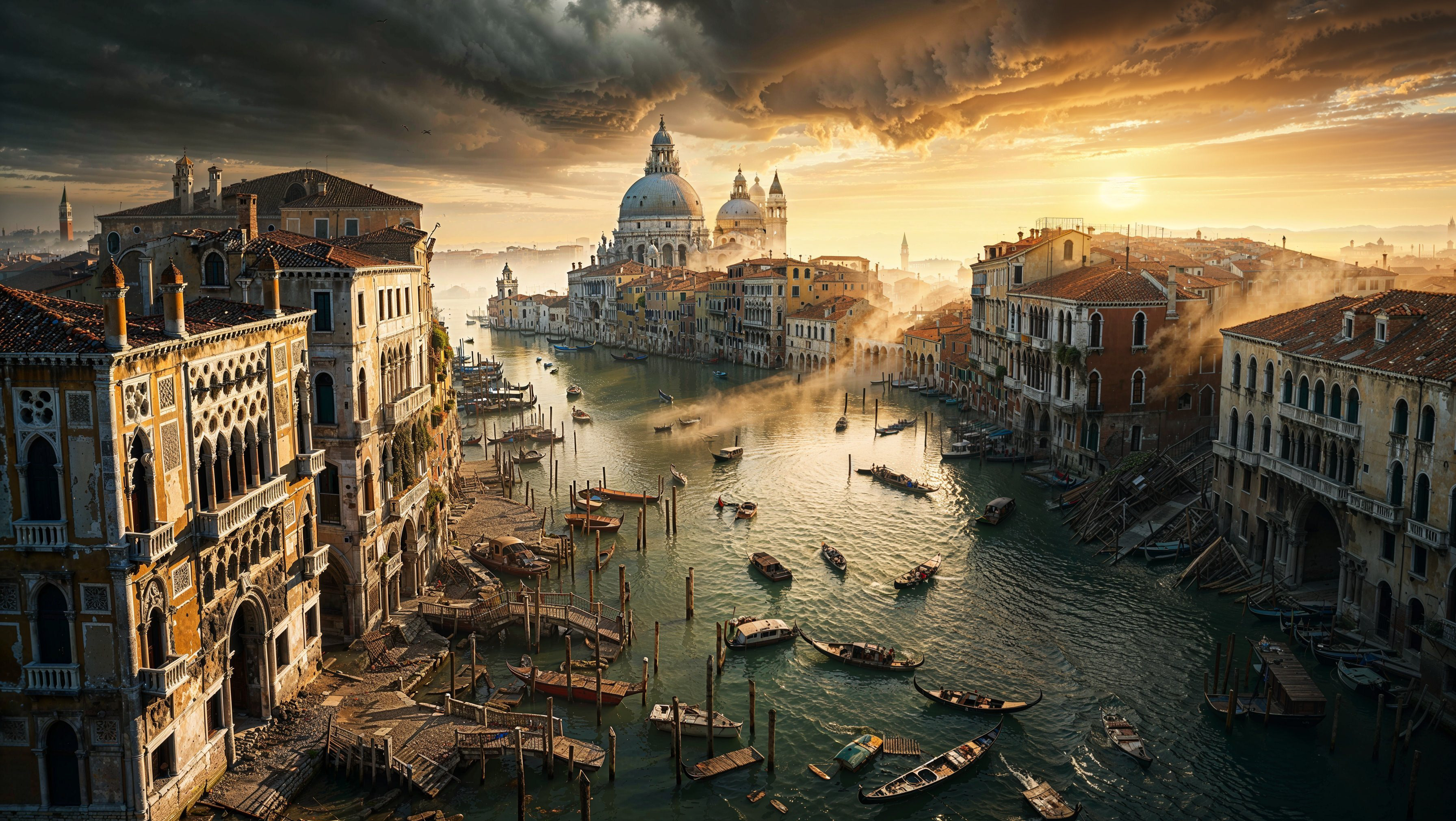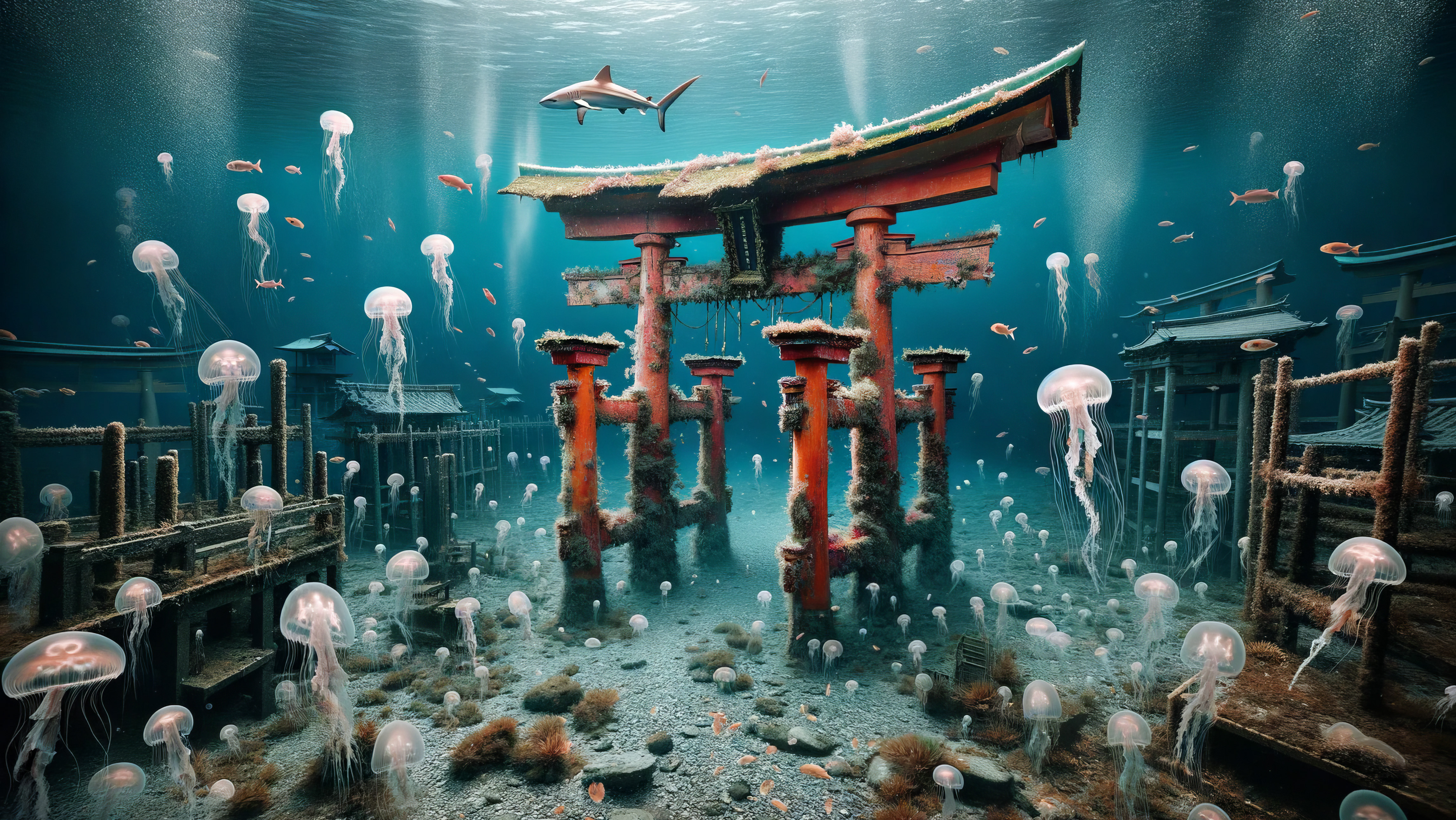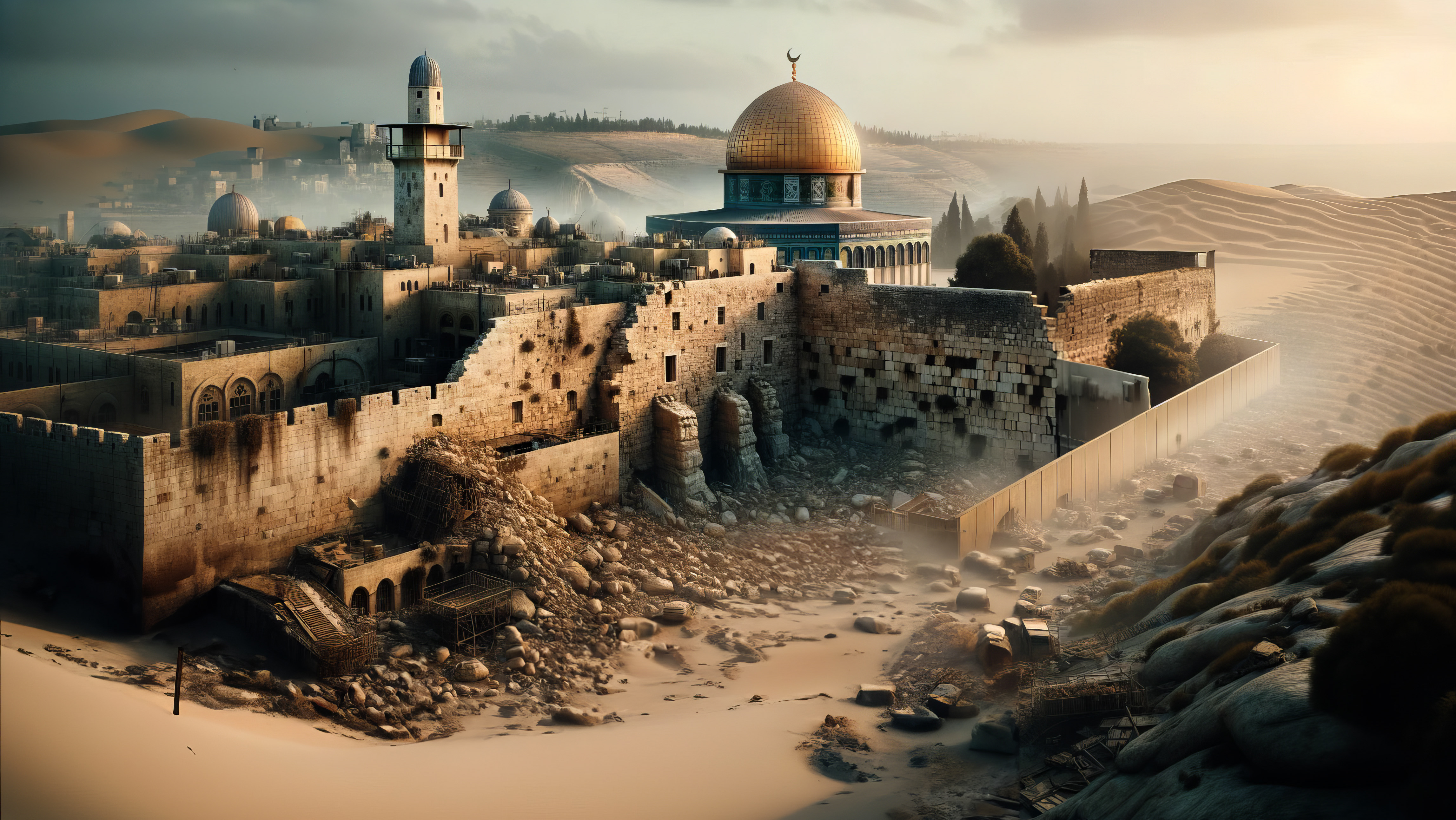Frozen Capital
My journey to frozen London in November 2082 began in the city centre, in the Westminster district. Here, what once was vibrant and bustling now lay still, as a diorama of history paused in a moment of time.
The monumental Big Ben, a long-standing symbol of London, seemed frozen, its hands unmoving, trapped in a time long gone. I crossed a street littered with delicate snow drifts, debris, and miscellaneous objects, heading towards the opposite bank to walk in the direction of Tower Bridge.
Walking was difficult. The entire coast was covered with protruding fragments of buildings. By then, London had already been scarred by the destruction of the Scottish Independence War in the middle of the 21st century. Yet it was only the protracted chill that had frozen it in time and space. The Thames had long ceased regular movement, and snowdrifts increasingly bound London's legs. Even the snow now sometimes fell in the summer, but there was no one left to grumble about it in the city.
The city stood like a sculpture frozen in the snow, seemingly waiting for a mere push to crumble into numerous ruins. Buildings were devastated by the complex aftermath of the era, yet the capital of the English and Welsh Confederation still stood, a reminder of the good old times.
A Wheel Stuck in Time
Like a wheel frozen in history, the London Eye sparkled with ice sheets wrapped around it, somehow adding an unusual touch of colour to its depleted surroundings. The evening was approaching, and I decided to find a place to take refuge and find warmth.
Soho was almost untouched, but it was evident that the icy breath had penetrated fully, stopping its heart. Pieces of ice sucked from the roofs, and frozen, broken cars lay scattered around. As I continued through the city, I came upon a street that once gleamed with the signs of numerous shops and boutiques. Now, it stood in complete ruins. The devastation here was especially more noticeable, perhaps reflecting the last rampages and disaster that the city had endured.
A walk through London's ruins was a journey through memories and nostalgia. The once-iconic locations now lay in varying degrees of decay and disarray. The broken remains of what once were thriving centres of human activity now offered shelter to snow and ice.
Despite the destruction, I found a peculiar beauty in the lonely silence. It was as if the city had not died but merely retreated into a profound slumber. The grandeur of history mingled with the stark reality of a frozen present, where every structure, every piece of rubble, seemed to tell a story.
When the shadows grew long, and the icy winds began to howl through the darkened streets, I found a shelter in what once must have been a lively pub. The cold had permeated its walls too, but the memories of laughter and cheer seemed to linger still, a faint echo of the life that once was.
As I settled in for the night, wrapped in layers against the relentless cold, I pondered the transformation of this majestic city. The desolation was not just physical but seemed to permeate the very soul of London. A city that once stood as a testament to human ingenuity and resilience now lay as a frozen monument, not waiting to be reborn but perhaps to dissolve gradually, to become one with time.
In the profound silence, I could almost hear the whispers of the past, the echoes of the lives that had once filled these streets. There was a wisdom in the frozen landscape, a solemn reminder of the transient nature of all things, a lesson in humility and reverence for the relentless march of time.
The night wore on, and the frozen London continued its eternal rest. It was no longer a city of dreams and ambitions. In its silence and stillness, there was a profound beauty, a resonance with the universal truth that everything has its time and that time, too, must pass.
As I drifted asleep, the images of frozen London stayed with me. It was a city that had found its eternal rest, not to be reborn, but to be remembered, cherished, and ultimately, to become a part of the greater tapestry of history and humanity.

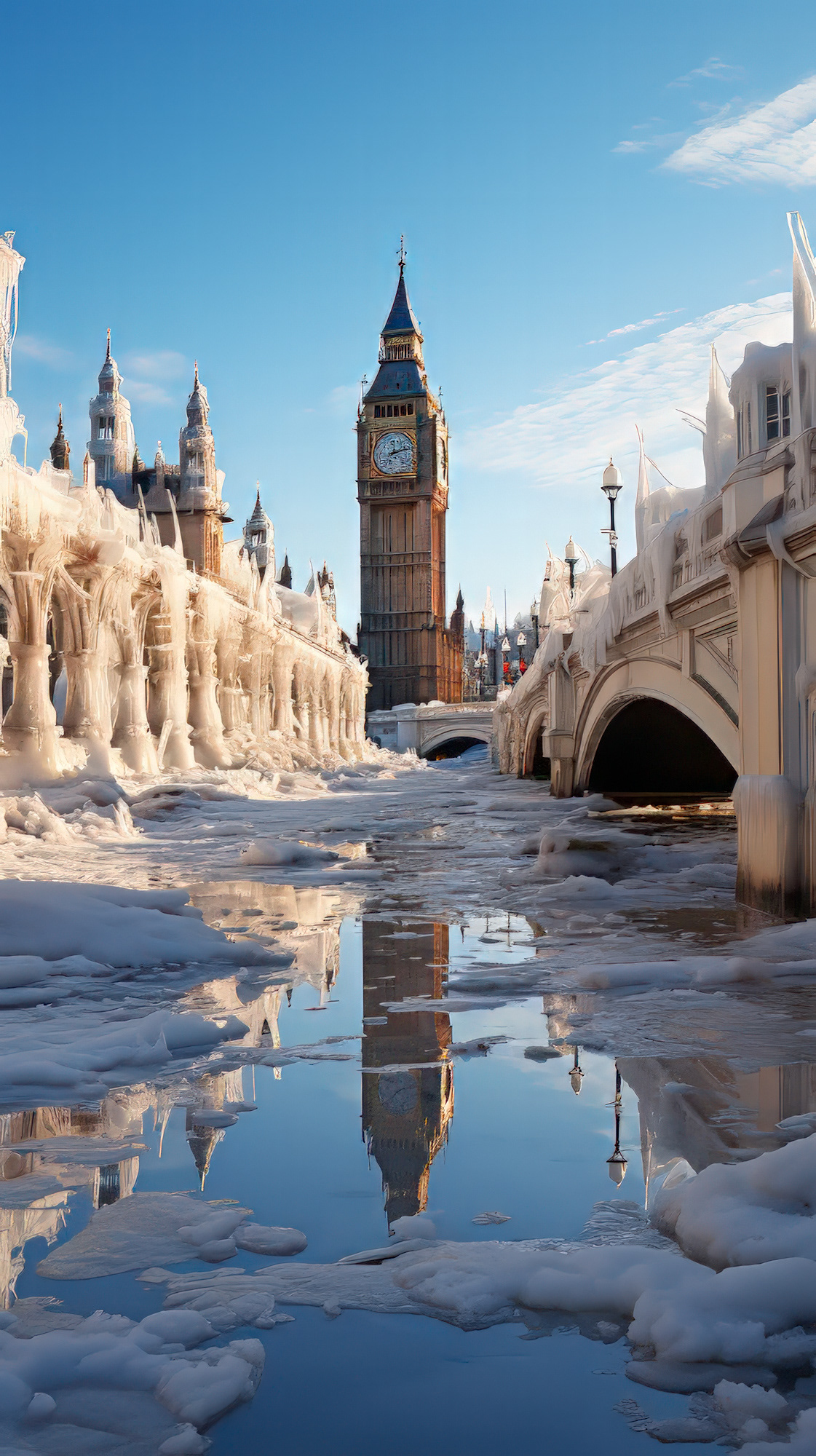
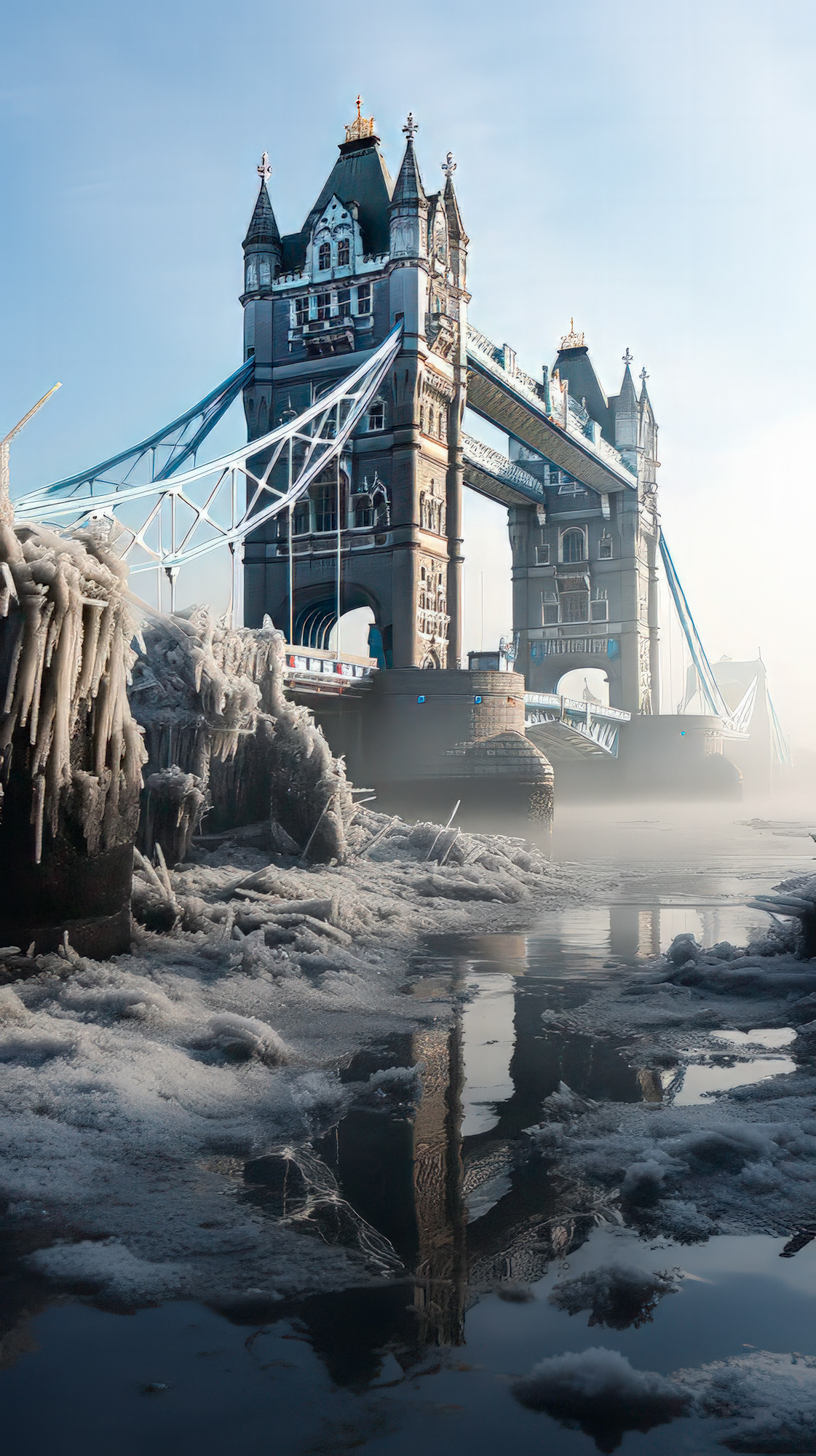
The Ghosts of Thames
The next day's dawn brought a pale, cold light that filtered through the gaps in the broken windows of my makeshift shelter. I awoke to the serene stillness, the quiet only broken by the occasional creak and groan of the frozen structures around me.
I ventured out into the streets, the icy wind biting at my face, my breath turning to frost in the air. The roads that had once thrummed with life were now eerily silent, with only the wind to keep me company. The bitter cold had frozen the water and the buildings and seemed to have frozen time itself.
As I walked through the haunting beauty of this frozen cityscape, I couldn't help but reflect on the city's history. Once the heart of an empire, London had seen centuries of change and turmoil, triumph and tragedy. It had withstood plagues, fires, wars, and countless other calamities. But the chill that now held it in its icy grasp was different. It wasn't merely a physical freeze; it was a freeze of the soul, a stasis that held in place the very essence of what the city had once been.
The frozen River Thames, a silent witness to the city's many stories, lay beneath a thick layer of ice. The river that had once been a lifeline, a bustling trade route, and the backdrop to many historical events, now lay still. It was as if the river's flow had been arrested along with the city's life, both locked in a perpetual winter.
I made my way to the Tower Bridge, a skeletal structure looming over the ice-bound river. Its once mighty towers stood like mournful sentinels, guardians of a past that had slipped into the annals of history. I could almost hear the whispers of the countless souls who had passed through its gates, the echoes of a time when it stood as a symbol of power and prestige.
I continued to wander through the city, every turn revealing another frozen scene, another snapshot of a time gone by. Buckingham Palace, once a seat of power and a symbol of royal grandeur, now stood desolate, its once magnificent façade encased in ice. The Union Jack no longer flew above, and the gates lay open, inviting anyone who dared to explore its frozen halls.
St. Paul's Cathedral, a masterpiece of architecture and worship, now lay in peaceful solitude. Its grand dome was covered in a layer of frost, and the once lively square was devoid of people; the only sounds were the distant cries of the wind.
Each landmark, each street, and each frozen fragment told a tale of human achievement, culture, and history. But they also spoke of the fragility of existence, the impermanence of human endeavours, and the relentless force of nature.
Walking through the desolate streets, I reflected on the city's transformation from a bustling metropolis to a frozen wasteland. Was it poetic justice, a natural culmination of human folly and arrogance? Or was it merely the capricious whim of nature, a reminder of our smallness in the grand scheme of things?
The thoughts were as chilling as the icy wind that swept through the ruins. There was a wisdom in the frozen silence, a profound understanding that all things must come to an end and that all human achievements are transient and fleeting.
The city's eternal rest was not a defeat but a transition, a transformation into a new state of being. It was no longer a city of commerce, politics, or power. It was now a city of memory, contemplation, and eternal silence.
Reflections in Ice
The following day dawned with the same pale, bleak light that had become the norm in this frozen world. The cold was more biting now, more insistent as if the very air had a message to impart.
As I continued my exploration of the city, the devastation in certain quarters became increasingly apparent. It was as if the last wave of destruction, perhaps a natural disaster or an act of violence, had wreaked havoc here with particular ferocity. Buildings lay in ruins, their damp windows staring out like unseeing eyes. The streets were strewn with fragments of logs and twisted metal, overturned cars, and other debris, all gradually concealed by the relentless snow.
The relentless advance of the ice seemed to be closing in on the city, creeping closer every year. It was only a matter of time before the city would be entombed entirely, the ugly scars of destruction hidden forever beneath a shroud of ice and snow.
The Thames was a mass of floating ice, a web of icicles hanging from every conceivable point, a testament to the freezing temperatures that had halted all river traffic long ago. The frozen river seemed a symbol of the city, stagnant and lifeless, yet hauntingly beautiful in its icy repose.
The Royal Desolation
I made my way to Buckingham Palace, keen to catch a glimpse of it before it succumbed to the icy breath that seemed to be gradually wearing everything down. The once-majestic edifice now stood as a sad reminder of past glories; the reign of King George had long since vanished along with all his subjects. The castles stood empty, ghostly sentinels of a bygone era.
Seeking shelter from the penetrating cold, I stumbled into an orangery, hoping to find some respite. However, the interior was no warmer. The temperature often plummeted to minus twenty degrees Celsius or lower at night. Instead of lush plants, the space was filled with two and three-meter-long icicles, crystalline formations where verdant life once flourished.
Under the influence of the feeble sunlight, the snow was still melting in patches, revealing all that was left on the roads: wrecked cars, desolate yards, and ruined streets. A melancholy settled over me as I roamed around this once-thriving city under the ever-present clouds that mercifully shielded me from the sun's weak rays.
The scenes of devastation and abandonment were overwhelming, yet there was a poignant beauty to the desolation. Once teeming with life, the buildings and streets had become sculptures in the grand gallery of nature.
The stark contrast between the grandeur of the city's past and its current frozen state weighed heavily on my mind. I felt a profound connection to this place, its story, and its silent struggle against the relentless march of time and nature.
The urge to return to shelter grew as the day wore on and the cold deepened. I knew my journey through frozen London was drawing close, but the images and emotions would stay with me, warming me with their complexity and depth.
There was a wisdom in the city's silence, a lesson in the frozen streets and abandoned palaces. Humanity's grand designs and ambitions were but transient things, vulnerable to the whims of nature and time.
It was a city with a different life in its eternal freeze, a dash of reflection and remembrance, silent contemplation and unspoken wisdom. The frozen streets had whispered truths and posed questions, and I left the city feeling a strange sense of peace as if I had touched something eternal, something beyond the transient world of human existence.
The cold, ice, and silence were not merely physical phenomena. They were a metaphor for the human condition, a reflection of our fragility and strength, struggles and triumphs, and our timeless quest for meaning and connection.



